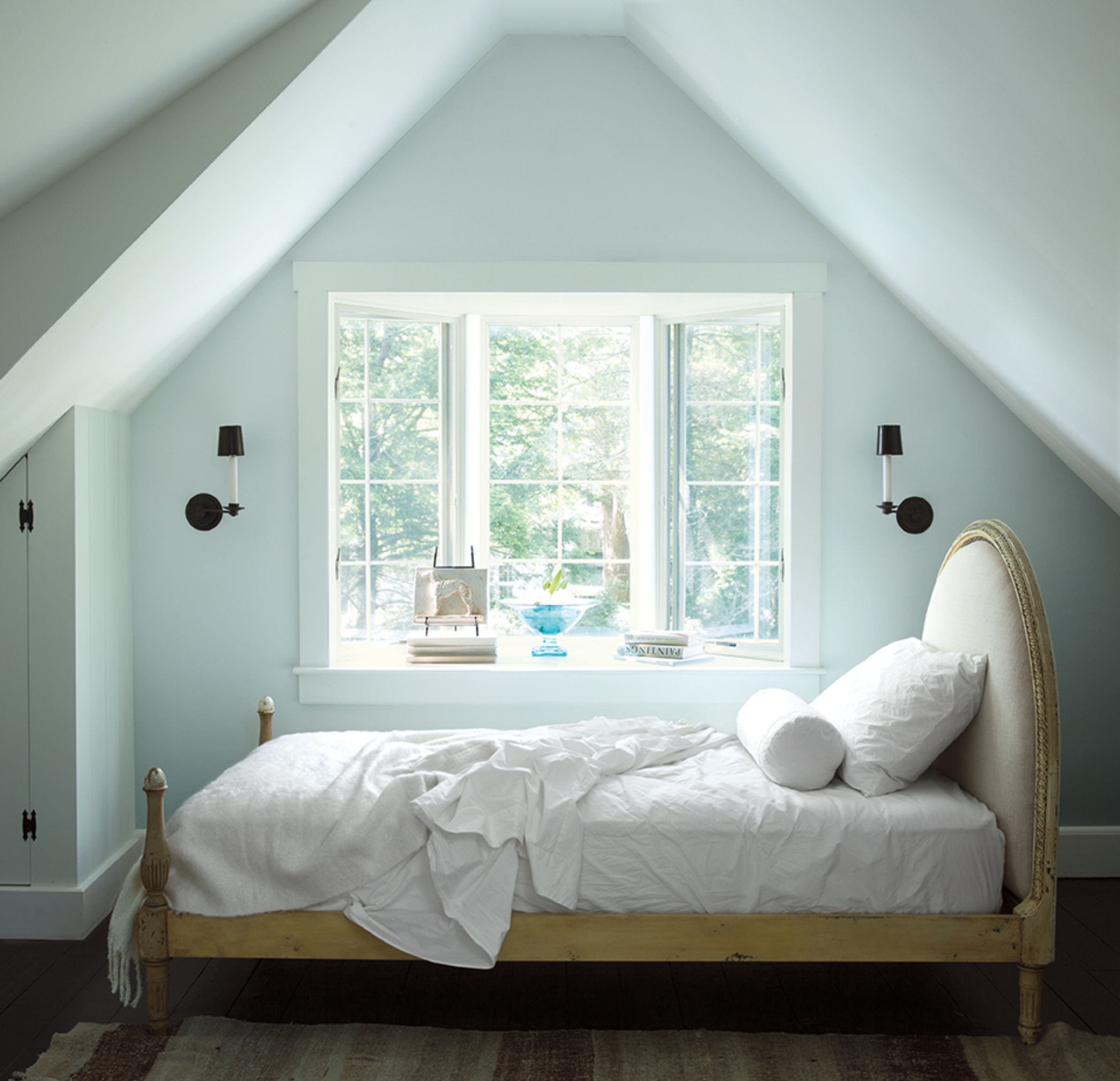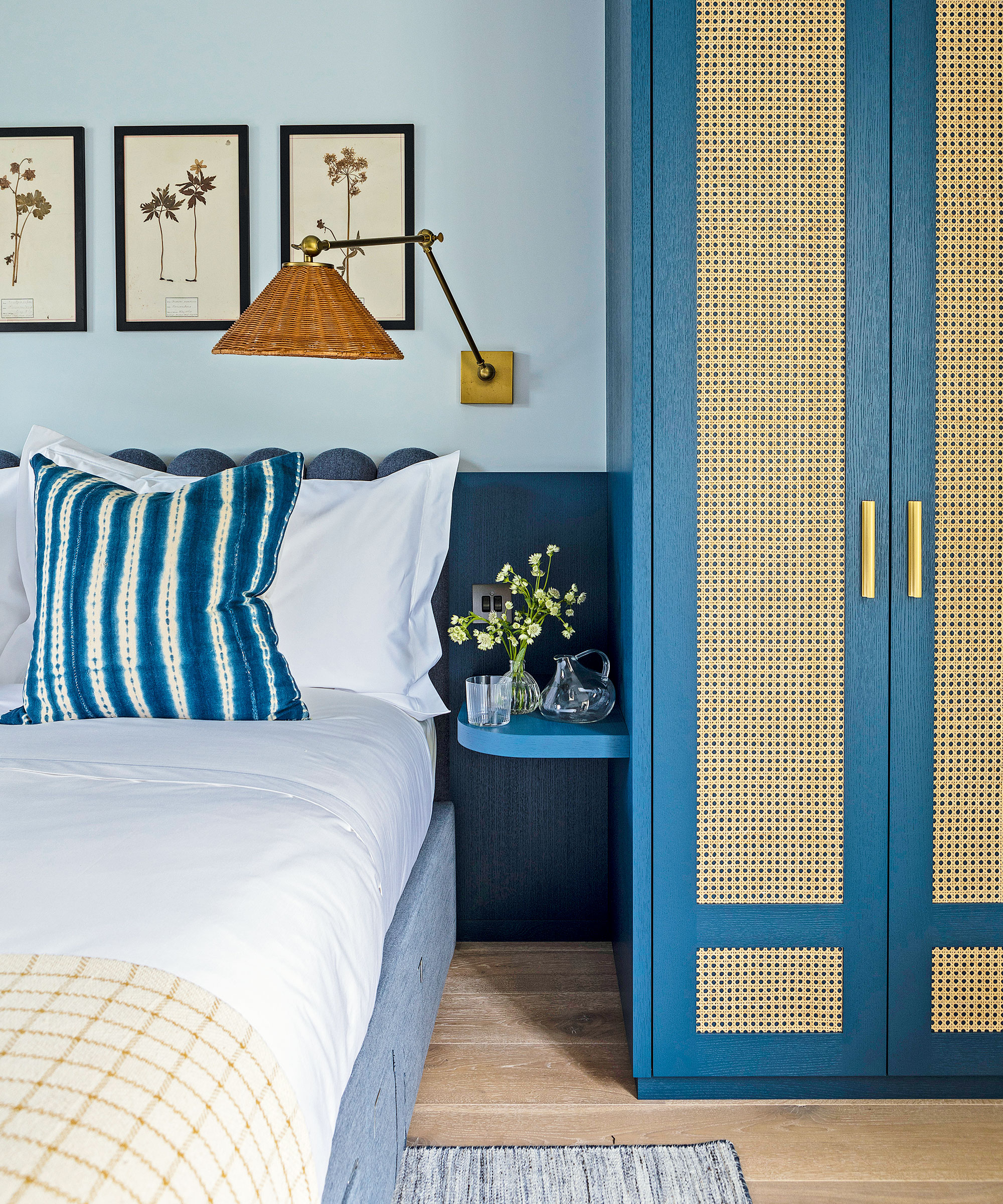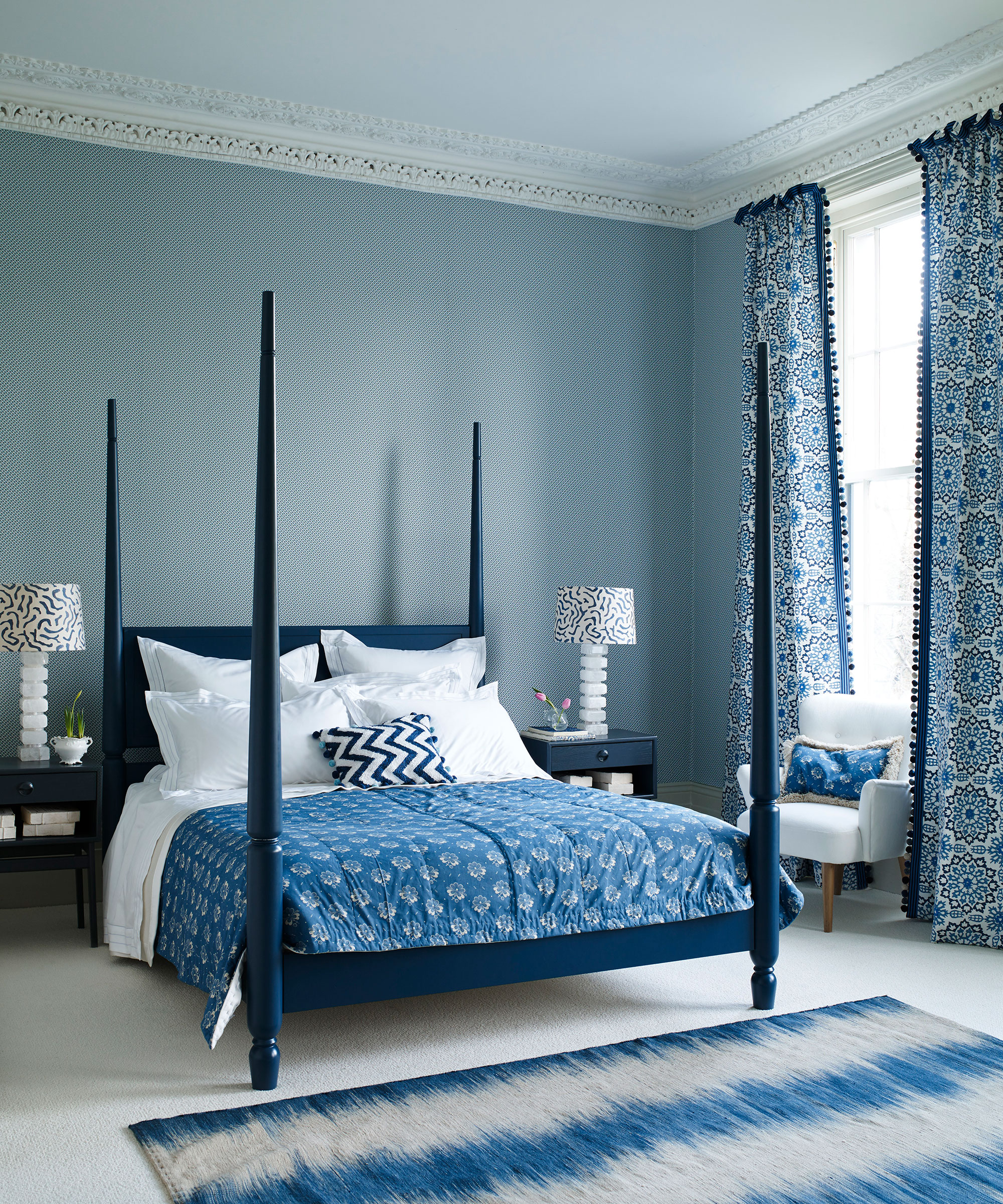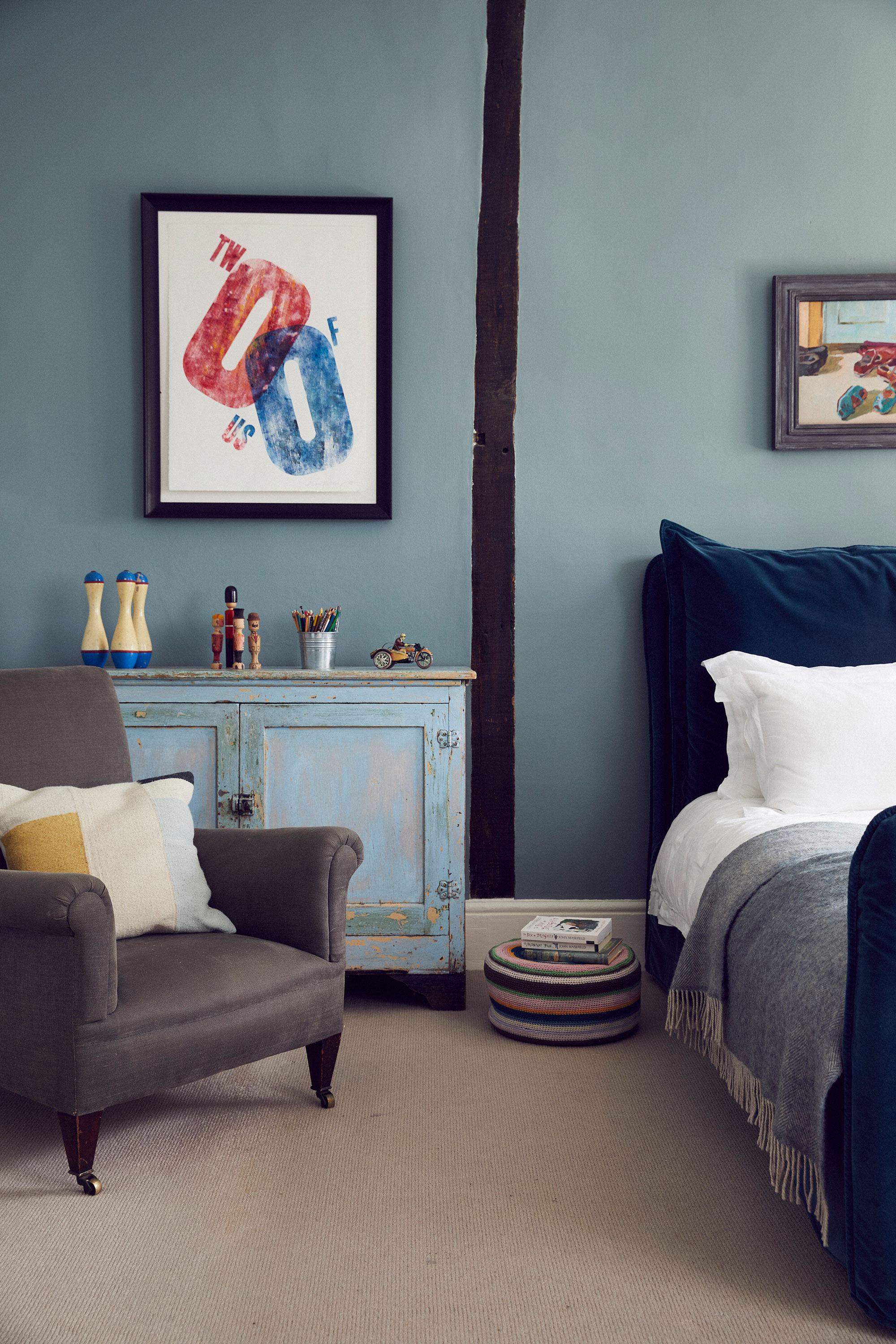What color helps sleep?
Psychologists and sleep experts are in agreement – this is the hue for a therapeutic, sleep-inducing space


If you're wondering what color helps sleep, it's likely you're curating a sleep-inducing space. Doing so comes down to several important factors according to experts – from your mattress placement to your bedding – and, of course, your color choices.
A growing interest in color psychology has naturally triggered the question of which color reigns superior in the bedroom – and the winner is clear.
Sleep experts agree that light blue is the best color to help you sleep better – so it may be worth incorporating this color into your bedroom color ideas if you're struggling to fall into a peaceful slumber.
Whether you subtly inject the hue with best bedsheets or your color drench your entire scheme, blue bedroom ideas may be the cure for insomnia that you crave.

What color helps sleep?
We asked sleep experts for their choice of color for the bedroom, and they all agreed: light blue is best.
Katherine Hall, a sleep psychologist from Somnus Therapy, explains that light blue is associated with calmness and serenity – meaning it is the best color for promoting a peaceful night's sleep. 'Studies have also shown that households with blue bedrooms sleep the best when compared to any other color,' she says.
But what makes this shade so powerful? And is it really worth bringing this shade into the forefront? Here's what the experts think.
Design expertise in your inbox – from inspiring decorating ideas and beautiful celebrity homes to practical gardening advice and shopping round-ups.
The physical and therapeutic benefits of blue

'Blue can be an excellent choice for decorating a bedroom, as it reduces muscle tension and pulse, calms the mind, and normalizes breathing,' explains Dr Rosmy Barrios, a regenerative medicine specialist at Swiss Medica and author at Health Reporter.
Dr Rosmy suggests that blue is a perfect bedroom paint idea for those who struggle to relax because if of its rich calming effects. It is also recommended for those who have insomnia. 'Moreover, the color blue is associated with harmony and balance,' she adds.
And Kaley Medina, a Pediatric & Adult Sleep Coach from Live Love Sleep, agrees.
'Soft and light blue colors are non-stimulating, which can help your body produce melatonin (the hormone in our bodies that makes us naturally sleepy with the rise and fall of the sun),' she says. 'This is exactly what our body needs in the evening to get tired when bedtime arrives.'

Kaley similarly emphasizes the color's relaxing, calming effects, adding how decorating with blue envokes visions of the sky and the ocean. 'You can add blue to your bedroom walls, bedding, or decor to create that feeling of serenity.'
How will you bring blue into your bedroom to help you sleep?

Megan is the Head of Celebrity Style News at Homes & Gardens, where she leads the celebrity/ news team. She has a history in interior design, travel, and news journalism, having lived and worked in New York, Paris, and, currently, London. Megan has bylines in Livingetc, The Telegraph, and IRK Magazine, and has interviewed the likes of Drew Barrymore, Ayesha Curry, Michelle Keegan, and Tan France, among others. She lives in a London apartment with her antique typewriter and an eclectic espresso cup collection, and dreams of a Kelly Wearstler-designed home.